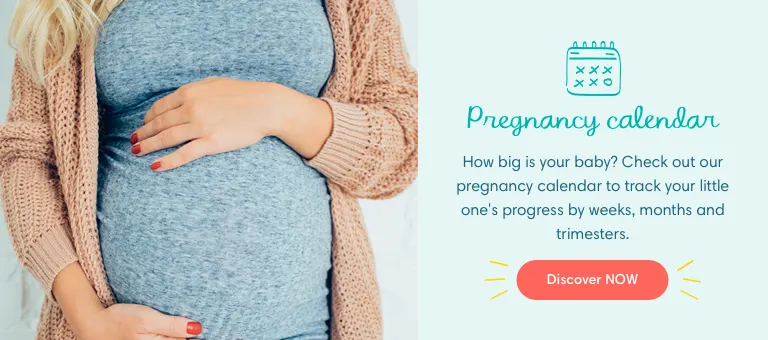What are Braxton Hicks Contractions?
Toward the end of your pregnancy, you might start wondering how you’ll know when you’re in labour. It can be especially confusing if you experience contractions in the second or third trimester that go away without leading to labour. These are called Braxton Hicks contractions, and they're one of the ways your body gets ready for labour. Keep reading to discover more about Braxton Hicks, including what causes them, what they feel like, and how to distinguish them from true labour contractions.
What Are Braxton Hicks?
Also known as "false labour" or "practice" contractions, Braxton Hicks contractions (named after the doctor who first identified them) are not actual labour contractions, but they are caused by the muscles of the uterus tightening, just as real labour contractions are.
Braxton Hicks contractions help your body prepare for birth by tightening and relaxing the uterine muscles, although they're not actually opening the cervix. This will happen when true labour contractions start. Knowing how long your contractions will last and how frequently they occur can help you determine whether you’re experiencing real labour contractions or not.
What Causes Braxton Hicks?
As mentioned above, Braxton Hicks contractions are caused by your uterine muscles contracting. This is thought to be your uterus “practicing” for the process of labour.
These contractions are usually harmless and are a normal part of pregnancy. If you have any questions or concerns, though, it's best to consult your healthcare provider.
What Do Braxton Hicks Contractions Feel Like?
It’s natural for pregnant people to ask, “Do Braxton Hicks hurt?” or “Do Braxton Hicks feel like cramps?” These contractions can be mild—you may detect sensations of tightening and relaxing of the uterus—but they can also be a bit more painful. These contractions may start out feeling something like familiar menstrual cramps but can grow more intense in the final few weeks of pregnancy. However, not everyone experiences Braxton Hicks and for some people, they can be painless.
Luckily, there are a few ways to help ease the discomfort of these contractions, while also confirming that labour hasn't started yet. Try to change positions if you're seated or lying down, or go for a brief walk if possible. Movement can help these contractions subside. False contractions are also more likely to strike when you're dehydrated, so be sure to drink plenty of water, especially as your due date approaches.
Where Do You Feel Braxton Hicks
You may experience Braxton Hicks contractions as a tightening sensation primarily in your lower belly and pelvic region or near the top of your uterus.
How Long Do Braxton Hicks Last?
During pregnancy, it’s natural to have certain questions such as, “Why am I having so many Braxton Hicks contractions?” and “How many Braxton Hicks contractions is normal?”
The duration and timing of Braxton Hicks contractions will vary from person to person, but they typically don't get longer or stronger as they progress, something that sets them apart from true labour contractions. These practice contractions don't follow a consistent pattern and will eventually fade away. It’s also common for Braxton Hicks to stop or ease if you move around or change positions.
If you notice that your contractions are becoming more regular, longer, or more painful, it's a good idea to reach out to your healthcare provider, as these could be signs of true labour. If you’re experiencing a lot of Braxton Hicks contractions or you’re having them all day, this may be due to dehydration or being very active; however, it’s always best to double-check with your healthcare provider.
Further on in our article, we'll provide more details on the differences between Braxton Hicks and true labour contractions.
When Do Braxton Hicks Start and How Early Can They Start in Pregnancy?
Braxton Hicks contractions usually start in the third trimester, although you might notice them in the second trimester as well. They may begin a little earlier if this is not your first pregnancy.
When Braxton Hicks contractions begin in the second trimester, they are generally mild, and more likely to strike after physical activity, like exercise or sex. They'll usually pass quickly, but if they become painful or regular, let your healthcare provider know right away.
How to Stop Braxton Hicks
While you may not be able to stop Braxton Hicks contractions completely, there are a few ways to help ease the discomfort.
Move around. Try to change positions if you're seated or lying down, or go for a brief walk if possible. Movement can help these contractions subside.
Stay hydrated. False contractions are also more likely to strike when you're dehydrated, so be sure to drink plenty of water, especially as your due date approaches.
Rest and relax. If you’ve been moving, lie down and rest, or do something that helps you unwind, such as taking a bath.
It may also help to eat something or to empty your bladder if you’re experiencing Braxton Hicks.
Braxton Hicks vs. True Labour Contractions
If you notice contractions before your 37th week of pregnancy, you might worry you’re going into preterm labour at the first sign of a contraction. And, if your pregnancy is full term, you might be wondering whether the contraction you’re feeling is another Braxton Hicks or if it’s finally the real deal.
To help sort this out, familiarise yourself with the symptoms of labour. It also helps to know what Braxton Hicks contractions feel like, and to keep in mind the following differences between Braxton Hicks and true labour contractions:
| Braxton Hicks Contractions | True Labour Contractions |
|---|---|
| Contractions are irregular and do not become more frequent. They may occur, for example, in intervals of 10 minutes, then 6 minutes, 2 minutes, 8 minutes, etc. | Contractions are regular, with predictable timing (such as every 8 minutes), and grow closer together over time. |
| Contractions do not become more intense. | You experience a steady increase in frequency and strength of contractions. |
| Contractions are felt in the front of the body. | Each contraction is felt starting at the lower back, and then radiating around to the front, low in the groin. |
| A change in activity or position may cause contractions to lessen or stop. | A change in activity or position will not slow or stop contractions. |
If you're not sure whether you're experiencing Braxton Hicks or true labour contractions, consult your healthcare provider. And if you notice any of the following signs of labour, contact your provider right away:
Abdominal cramps or pressure
Changes in vaginal discharge (discharge that is clear, pink, or slightly bloody or brownish could mean the mucus plug has come out)
Dull lower backache
Your water breaking.
Prodromal Labour vs. Braxton Hicks
There's often some confusion about Braxton Hicks contractions and prodromal labour. Both are considered to be “practice” or “false” contractions and can be experienced before active labour begins; however, there are a few differences between the two.
Braxton Hicks contractions, as we've already discussed, can start as early as the second trimester and are typically irregular and unpredictable; they don't increase in intensity or duration over time. Braxton Hicks contractions do not cause dilation of the cervix.
Prodromal labour, on the other hand, can feel very similar to real labour. These contractions can start several days or weeks before actual labour and can often be confused with the real thing. Unlike Braxton Hicks, prodromal contractions typically have a pattern and may hurt more. However, these contractions don't result in progressive cervical dilation.
In essence, both Braxton Hicks and prodromal labour help the body prepare for childbirth. Still, if you experience any changes or have concerns, consult your healthcare provider.
When to Contact Your Healthcare Provider
While Braxton Hicks contractions are typically harmless and a normal part of pregnancy, it’s natural to wonder when to be concerned about Braxton Hicks and what might warrant a call to your healthcare provider.
It's particularly important to get in touch with your healthcare provider if you experience any of the labour signs mentioned above, such as if the contractions become regular and more frequent, intensify in pain, or persist even after you've changed activity or hydration levels.
Also, if your Braxton Hicks contractions are accompanied by other symptoms such as lower back pain, pelvic pressure, increased vaginal discharge, and vaginal bleeding, or if you’re less than 37 weeks pregnant and have regular or frequent contractions, you should immediately contact your healthcare provider. These could be signs of preterm labour. Remember, when in doubt, it's always safer to reach out to a healthcare professional who can provide guidance based on your individual circumstances.
FAQS AT A GLANCE
You may be wondering why these contractions are called Braxton Hicks or who they are named after. They take their name from nineteenth-century physician John Braxton Hicks, who may have been the first clinician to describe these practice contractions that occur during pregnancy.
The Bottom Line
Braxton Hicks contractions can cause a little discomfort, but they’re a completely normal part of pregnancy. They play a key role in helping your body prepare for the big day when you actually go into labour.
If you’re stocking up your baby’s room with diapers and wipes for your newborn, don’t miss out on the rewards you could be getting. Download the Pampers Club App today.
How We Wrote This Article The information in this article is based on the expert advice found in trusted medical and government sources, such as the American Academy of Pediatrics and the American College of Obstetricians and Gynecologists. You can find a full list of sources used for this article below. The content on this page should not replace professional medical advice. Always consult medical professionals for full diagnosis and treatment.
Join Pampers Club and get:






